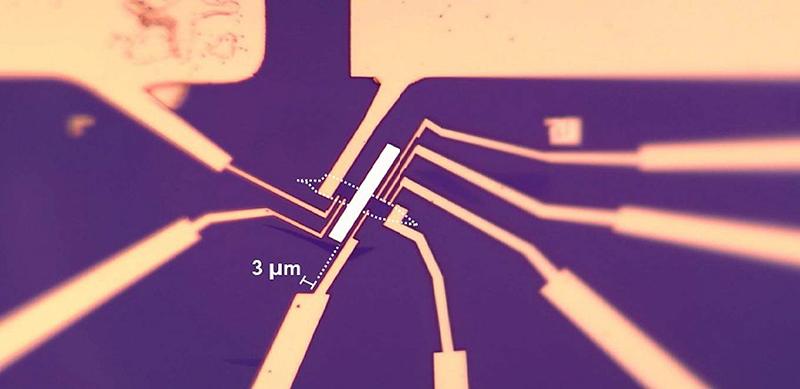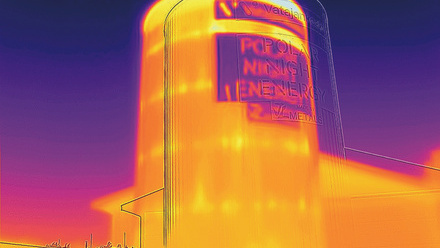A magnetic touch – making artificial magnetic texture in graphene
Pairing magnets with graphene can induce an artificial magnetic texture, say researchers from the University at Buffalo and The State University of New York (SUNY) Polytechnic Institute, USA.

The discovery could overcome obstacles related to the material’s non-magnetic properties, furthering potential applications in electronics such as superconductors, computers and other devices.
The properties are induced by covering part of a graphene sheet with a 20nm-thick magnetic cobalt film and probing the electrical properties of the graphene at a distance from the magnet. Eight electrodes are placed in different spots around the graphene and magnet to measure conductivity.
The team reports that the close contact between the two objects causes the normally non-magnetic carbon to behave differently, and the artificial magnetic texture persists even in areas of the graphene away from the magnet. The 2D material is said to exhibit magnetic properties like common materials such as iron or cobalt.
‘There have been a lot of previous efforts that have focused on making graphene magnetic, but every solution has come at the cost of compromising the superior intrinsic properties that give graphene its fame,’ says Nargess Arabchigavkani, Postdoctoral Research Associate at SUNY Polytechnic Institute.
‘The way that we induce magnetic texture in graphene not only does the job effectively, it also importantly keeps these properties intact. For example, we find that the charge carrier mobility, which is a gauge of how easily the charge carriers move inside the material and respond to electrical changes made to the device, is as high, if not higher, compared to the values reported in high-quality intrinsic graphene.’
She continues, ‘This is an example of a quantum-mechanical non-local effect and, in our experiment, completely overwhelms the intrinsic local properties of the non-magnetic graphene. Our finding that the charges in graphene (electrons or holes) that carry the current are capable of keeping the memory of what they have experienced as they travel over distances of several micrometres could be crucial for applications such as quantum memories.’
The induced magnetic behaviour is due to spin polarisation and/or spin coupling, the researchers say.
‘Graphene has the highest charge carrier mobility reported in any material and if merged with spintronics, fast and energy efficient electronics could become an everyday reality,’ Arabchigavkani explains. ‘But for that, magnetism has to be induced in graphene as spintronics utilises the spin of the charge carriers and it needs a base material with magnetic properties.’
Arabchigavkani believes the technique is scalable, but found limitations using mechanically exfoliated graphene (the Scotch-tape method), and the ferromagnetic structure was made by standard lithography methods. ‘If replaced with high-quality, chemical vapour deposition-grown graphene, and with some engineering effort, the device structure could be scaled up to the current capacity of…fabricating facilities in the semiconductor industry.’







